Prayer plants (Maranta leuconeura) are beloved for their beautiful, boldly patterned leaves and fascinating behavior — their foliage folds upward at night, resembling hands clasped in prayer, which gives them their name. Native to the tropical rainforests of Brazil, Prayer plants are prized for being decorative, unique, and relatively easy to grow indoors when provided with the right conditions.
However, one of the most important aspects of keeping a Prayer plant healthy and vibrant is proper watering. These tropical beauties are sensitive to both underwatering and overwatering, and striking the perfect balance is key to their success.
In this comprehensive guide, we’ll explore how often you should water a Prayer plant, the factors that influence its watering needs, signs of over- and under-watering, the best watering practices, and additional care tips to ensure your Prayer plant remains a stunning part of your home decor.
Introduction to Prayer Plants
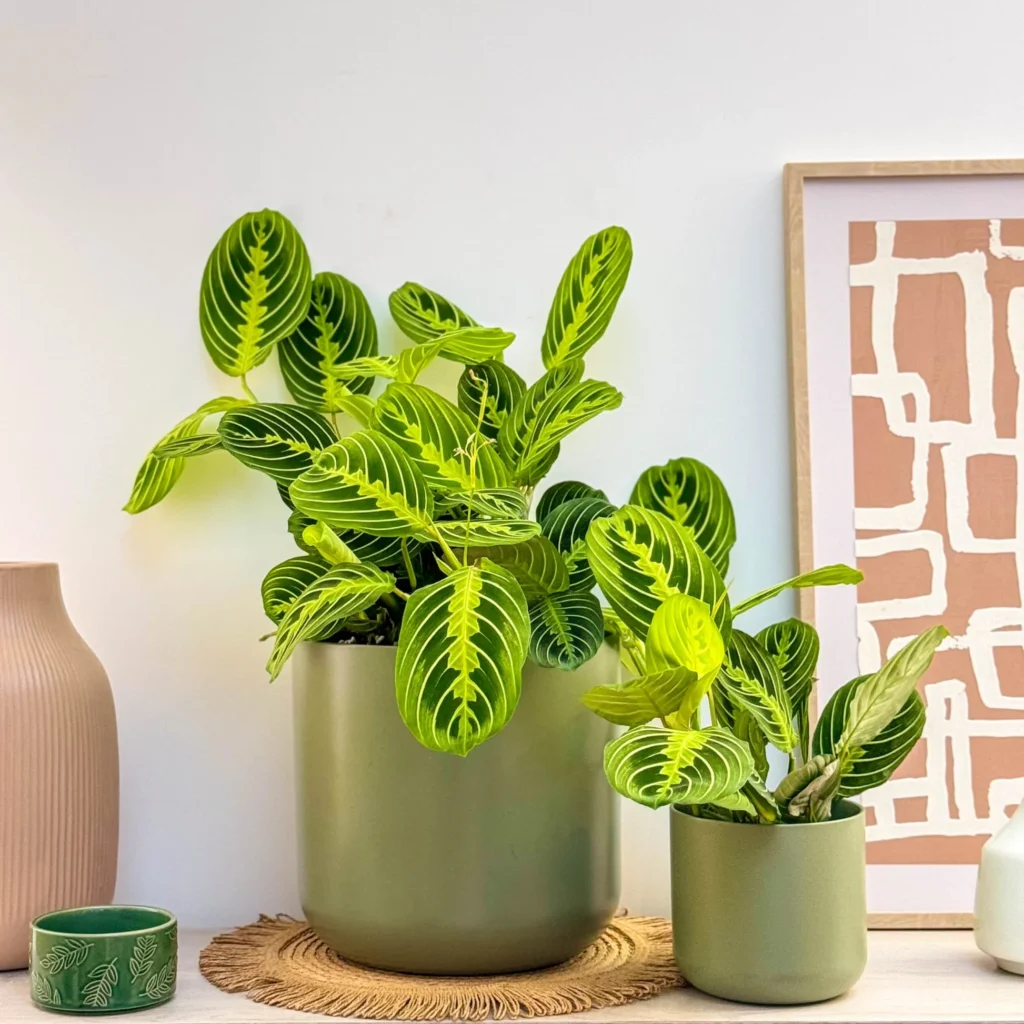
Prayer plants are members of the Marantaceae family, a group of tropical plants known for their ornamental foliage. Their oval leaves often feature vibrant hues of green, red, pink, or cream, with eye-catching patterns. In addition to their color, the leaves’ ability to rise at night and lower during the day makes them especially intriguing.
While generally easygoing, Prayer plants have specific preferences when it comes to watering, humidity, and lighting — all essential elements to replicate their native rainforest habitat.
How Often Should You Water a Prayer Plant?
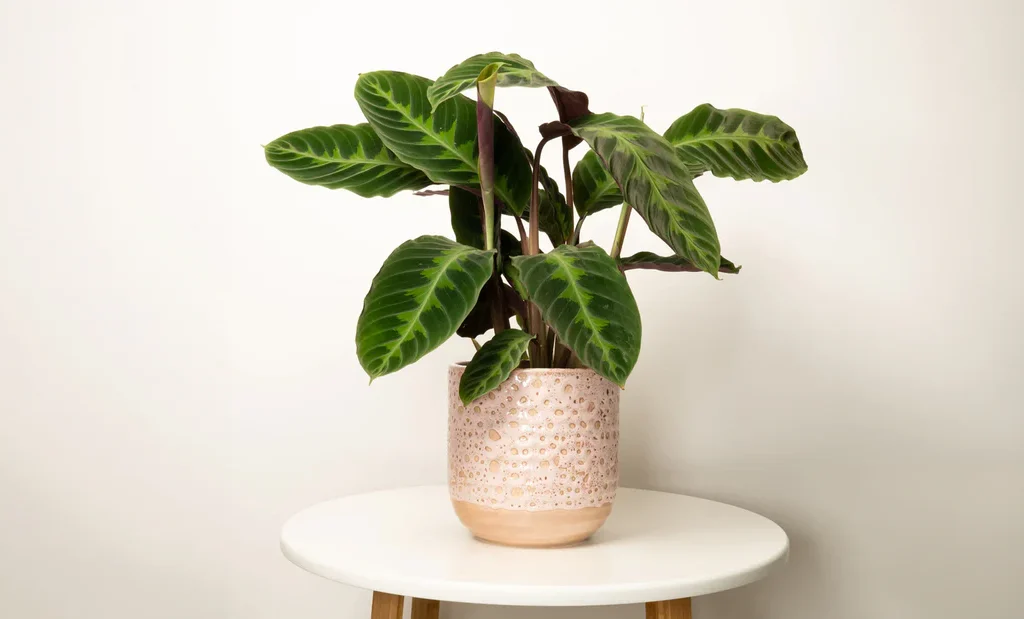
On average, you should water a Prayer plant every 5–7 days during its active growing season (spring and summer) and every 7–14 days during its dormant season (fall and winter).
However, it’s important not to stick to a rigid calendar schedule. Instead, consistently check the top 1–2 inches of soil and water when it feels slightly dry. The key is to keep the soil evenly moist but never waterlogged.
General Watering Guideline:
- Spring & Summer (active growth): Every 5–7 days
- Fall & Winter (dormancy): Every 7–14 days
Pro tip: Use your finger or a moisture meter to check soil moisture before each watering. Prayer plants dislike drying out completely or sitting in soggy soil.
Factors That Affect Prayer Plant Watering Frequency
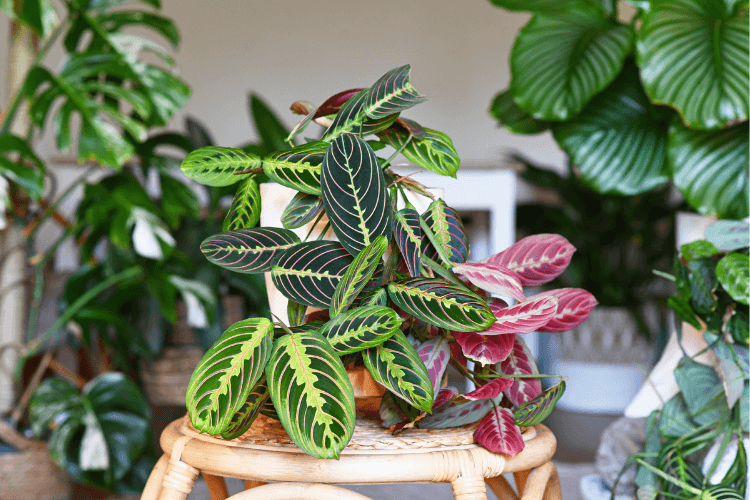
Several environmental and care-related factors influence how often a Prayer plant needs water. Understanding these will help you fine-tune your routine:
Season and Temperature
- Warmer months (spring and summer): Prayer plants grow actively and use water quickly.
- Cooler months (fall and winter): Growth slows, and water needs decrease.
Humidity Levels
Prayer plants thrive in high humidity (60–80%). In dry indoor air, the soil dries out faster, and the leaves are prone to crisping, requiring more frequent watering.
Pot Size and Material
- Small pots dry out faster than large containers.
- Terracotta pots absorb moisture, leading to faster soil drying, while plastic or ceramic pots retain water longer.
Light Exposure
Bright, indirect light speeds up soil evaporation and the plant’s water consumption, while lower light reduces both.
Soil Composition
Prayer plants prefer light, well-draining, peat-based soil that retains moisture while allowing excess water to drain away. Dense, poorly draining soil can increase the risk of overwatering.
Signs Your Prayer Plant Needs Watering
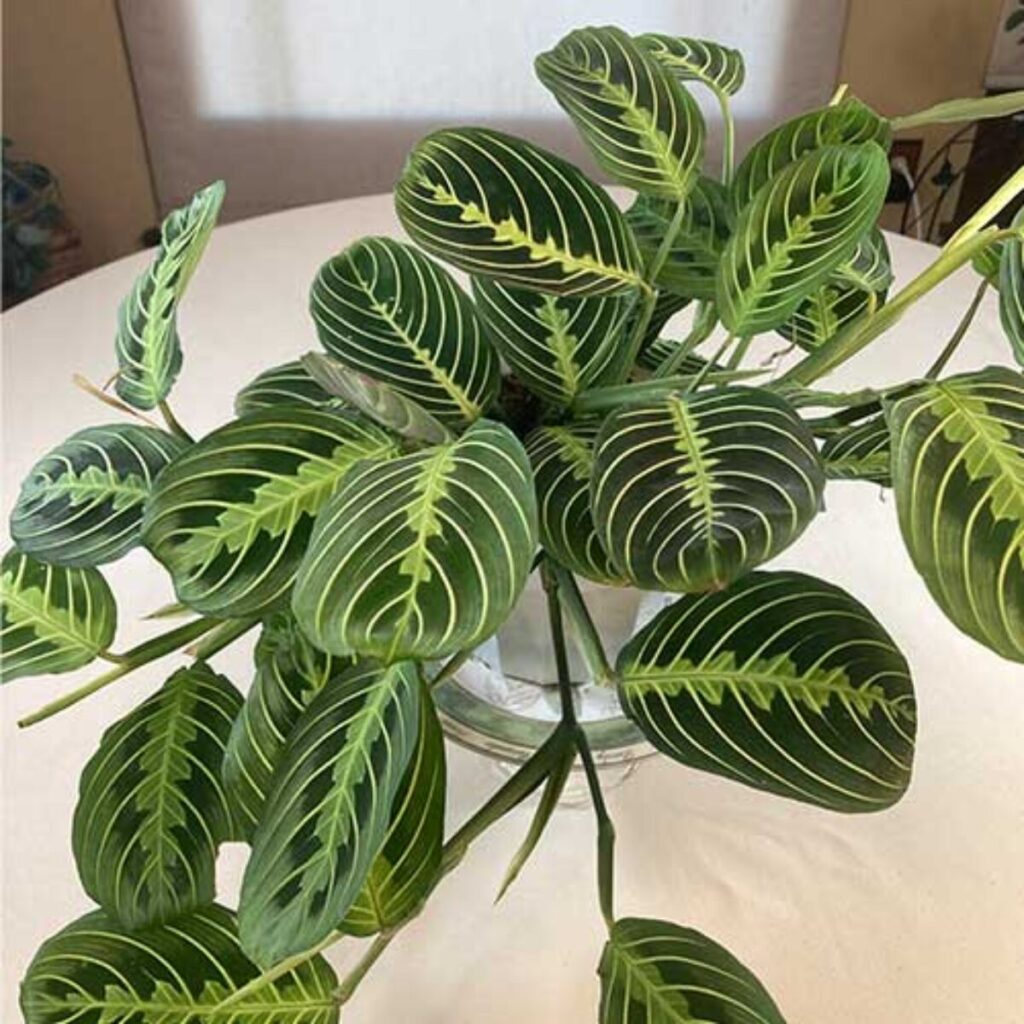
Prayer plants offer several visible indicators when they need hydration. Recognizing these signs early ensures healthier, more resilient growth:
Dry Topsoil
If the top 1–2 inches of soil feel dry to the touch, it’s time to water.
Leaf Curling
Leaves that curl inward or roll up during the day can signal underwatering, especially if humidity is also low.
Drooping Leaves
Wilting or drooping leaves suggest the plant is thirsty and needs water promptly.
Crispy or Brown Leaf Edges
Low humidity and prolonged dryness cause leaf edges to dry out and turn brown.
Signs of Overwatering a Prayer Plant
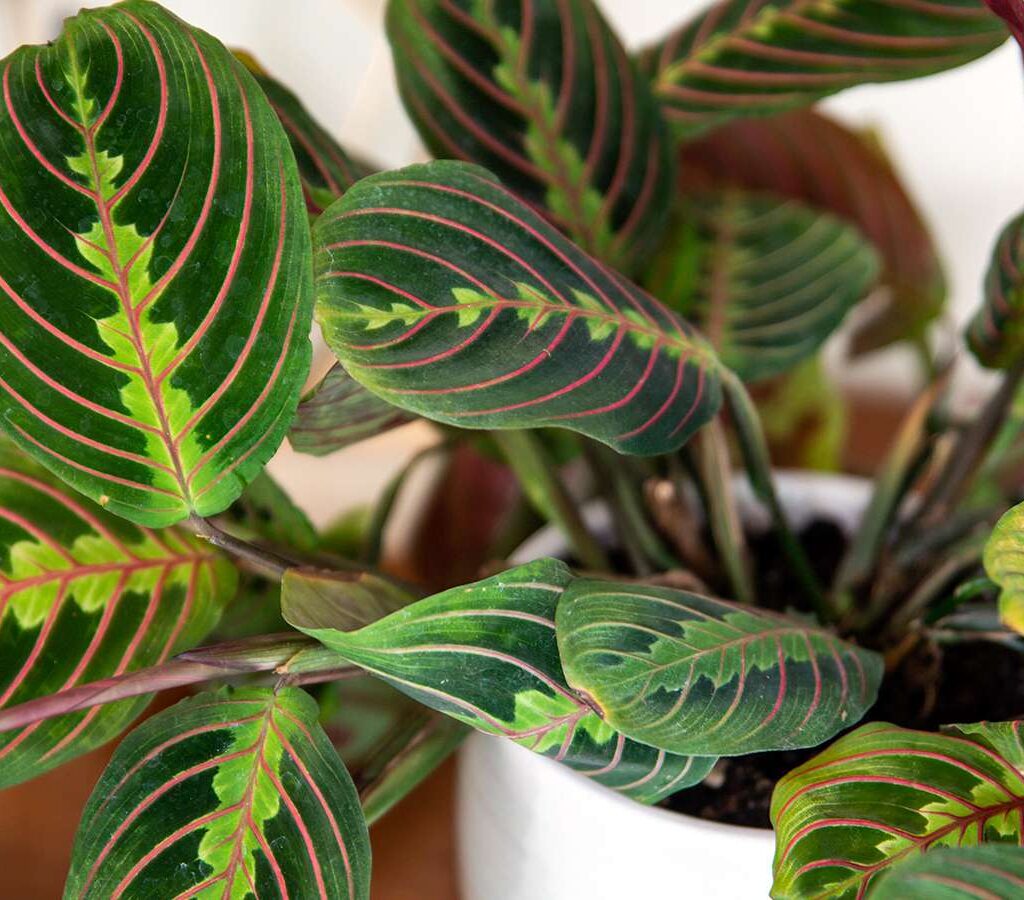
While Prayer plants enjoy consistently moist soil, they are susceptible to root rot from overwatering. Be on the lookout for these symptoms:
Yellowing Leaves
If lower leaves turn yellow while the soil remains wet, overwatering is likely the cause.
Wilting Despite Wet Soil
Leaves that droop or look limp while the soil is moist may indicate root damage from waterlogged soil.
Mushy, Blackened Roots
If you check the roots and find them soft or dark, root rot is already present.
Fungal Growth on the Soil Surface
Mold or a musty odor signals consistently wet soil and poor drainage.
How to Properly Water a Prayer Plant
The way you water your Prayer plant is just as important as how often. Follow these techniques for best results:
Use the Soak and Drain Method
- Water the soil evenly and thoroughly until excess water drains out of the pot’s bottom holes.
- Discard any water that collects in the saucer after 10–15 minutes.
- Allow the top 1–2 inches of soil to dry before watering again.
Tip: Always use a pot with proper drainage holes.
Use Lukewarm, Chemical-Free Water
Prayer plants are sensitive to chlorine, fluoride, and cold water. Use filtered, distilled, or rainwater at room temperature for best results. If using tap water, let it sit uncovered for 24 hours to allow chemicals to dissipate.
Check Soil Moisture Regularly
Test the soil moisture before each watering using your finger or a moisture meter.
Seasonal Watering Adjustments for Prayer Plants
Here’s a seasonal guide to fine-tuning your watering routine:
| Season | Watering Frequency | Notes |
|---|---|---|
| Spring/Summer | Every 5–7 days | Active growth and warmer weather increase moisture needs. |
| Fall/Winter | Every 7–14 days | Slower growth and lower temperatures reduce water consumption. |
Always monitor the soil’s top layer and adjust watering as needed.
Best Environmental Conditions for Prayer Plants
In addition to proper watering, other care factors contribute to your Prayer plant’s health:
- Light: Bright, indirect light. Avoid harsh direct sunlight which can scorch leaves.
- Humidity: Maintain 60–80% humidity. Use a humidifier, mist regularly, or place the pot on a pebble tray with water.
- Soil: Use a well-draining, peat-based, organic potting mix.
- Temperature: Keep between 65–80°F (18–27°C). Avoid cold drafts and sudden temperature drops.
- Fertilizing: Feed with a balanced, diluted liquid fertilizer every 4–6 weeks during the growing season.
- Pruning: Trim off yellow or damaged leaves to encourage new growth.
- Repotting: Repot every 1–2 years or when the plant becomes root-bound.
Why It’s Better to Slightly Underwater Than Overwater
Prayer plants are generally more forgiving of occasional dryness than waterlogged roots. If unsure, wait a day or two and check the soil again before watering. Consistent overwatering is more harmful and can quickly lead to irreversible root rot.
When in doubt — let the topsoil dry a bit and watch your plant’s leaves for hydration cues.
Conclusion
How often should you water a Prayer plant?
Typically, every 5–7 days during the active growing season and every 7–14 days in cooler months. However, the most reliable method is to monitor the top 1–2 inches of soil and adjust your watering schedule based on environmental conditions.
By practicing consistent soil checks, using proper watering techniques, selecting the right water type, and providing optimal humidity and lighting, you’ll enjoy a lush, healthy Prayer plant that graces your space with striking foliage and its signature evening movements.
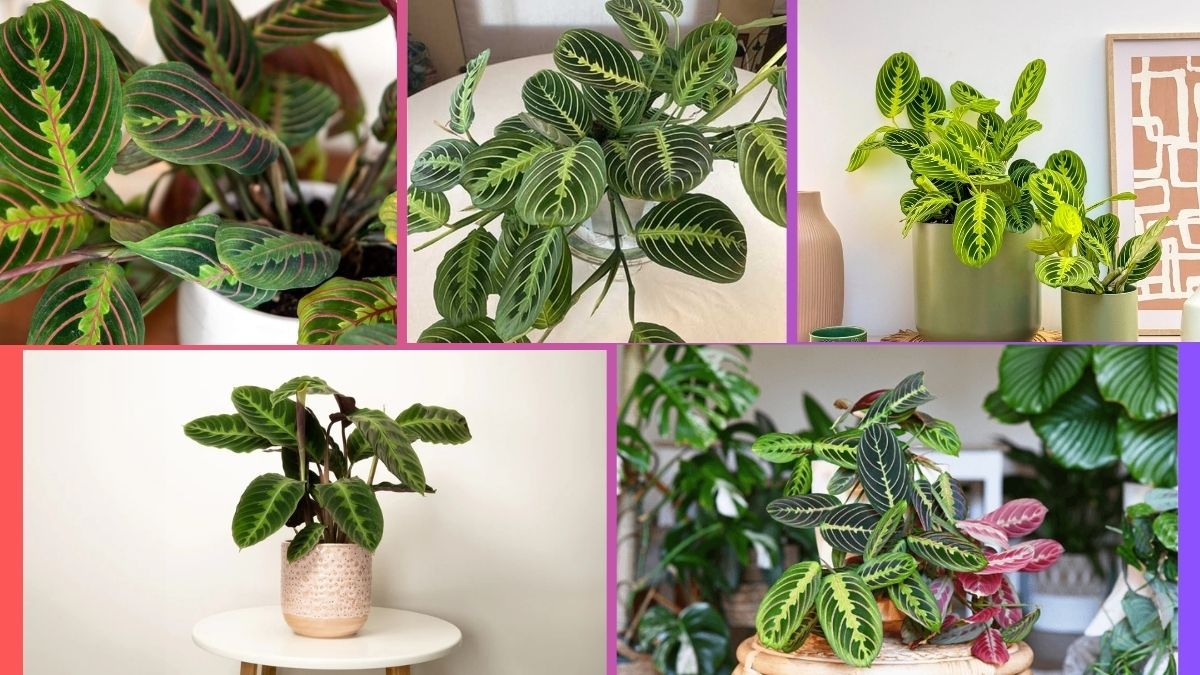



Leave A Comment